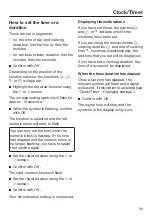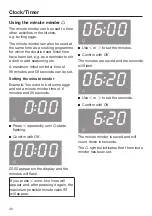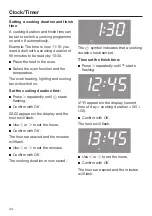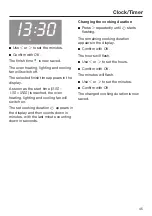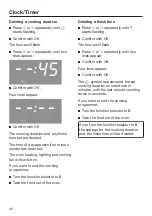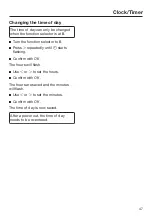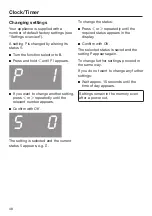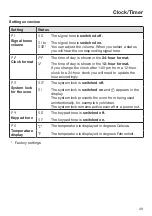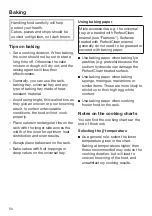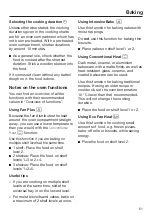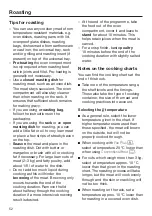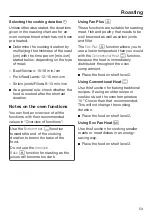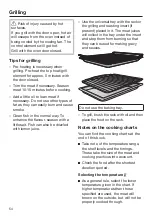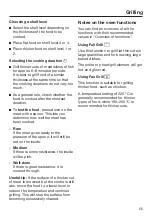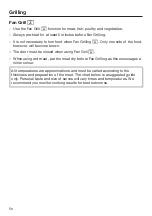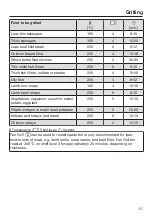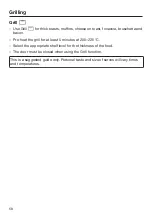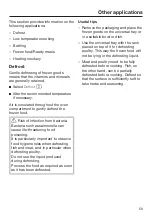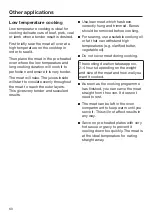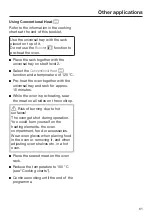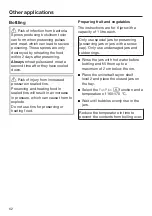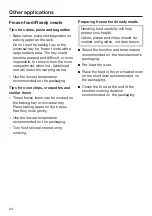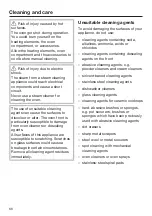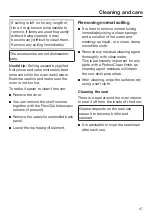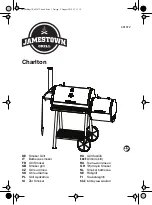
Roasting
52
Tips for roasting
– You can use any crockery made from
temperature-resistant materials, e.g.
oven dishes, roasting pans with lid,
ovenproof glass dishes, roasting
bags, dishes made from earthenware
or cast iron, the universal tray, rack
and/or grilling and roasting insert (if
present) on top of the universal tray.
–
Pre-heating
the oven compartment
is only required when roasting beef
sirloin joints and fillet. Pre-heating is
generally not necessary.
– Use a
closed roasting dish
for
roasting meat, such as an oven dish.
The meat stays succulent. The oven
compartment will also stay cleaner
than when roasting on the rack. It
ensures that sufficient stock remains
for making gravy.
– If you are using a
roasting bag
,
follow the instructions on the
packaging.
– If you are using the
rack
or an
open
roasting dish
for roasting, you can
add a little fat or oil to very lean meat
or place a few strips of streaky bacon
on the top.
–
Season
the meat and place in the
roasting dish. Dot with butter or
margarine or brush with oil or cooking
fat if necessary. For large lean cuts of
meat (2–3 kg) and fatty poultry, add
about 1/8 l of water to the dish.
– Do not add too much liquid during
cooking as this will hinder the
browning
of the meat. Browning only
occurs towards the end of the
cooking duration. Remove the lid
about halfway through the cooking
duration if a more intensive browning
result is desired.
– At the end of the programme, take
the food out of the oven
compartment, cover it and leave to
stand
for about 10 minutes. This
helps retain juices when the meat is
carved.
– For a crisp finish, baste
poultry
10 minutes before the end of the
cooking duration with slightly salted
water.
Notes on the cooking charts
You can find the cooking charts at the
end of this book.
Take note of the temperature range,
the shelf levels and the timings.
These also take the type of cooking
container, the size of the meat and
cooking practices into account.
Selecting the
temperature
As a general rule, select the lower
temperature given in the chart. If
higher temperatures are used than
those specified, the meat will brown
on the outside, but will not be
properly cooked through.
When cooking with
Fan Plus
,
select a temperature 20 °C lower than
when using
Conventional Heat
.
For cuts which weigh more than 3 kg,
select a temperature approx. 10 °C
lower than that given in the roasting
chart. The roasting process will take
longer, but the meat will cook evenly
through and the skin or crackling will
not be too thick.
When roasting on the rack, set a
temperature approx. 10 °C lower than
for roasting in a covered oven dish.


